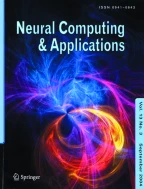Abstract
The long-term streamflow forecasts are very significant in planing and reservoir operations. The streamflow forecasts have to deal with a complex and highly nonlinear data patterns. This study employs support vector machines (SVMs) in predicting monthly streamflows. SVMs are proved to be a good tool for forecasting the nonlinear time series. But the performance of the SVM depends solely upon the appropriate choice of parameters. Hence, particle swarm optimization technique is employed in tuning SVM parameters. The proposed SVM-PSO model is used in forecasting the streamflow values of Swan River near Bigfork and St. Regis River near Clark Fork of Montana, United States. Further SVM model with various input structures is constructed, and the best structure is determined using various statistical performances. Later, the performance of the SVM model is compared with the autoregressive moving average model (ARMA) and artificial neural networks (ANN's). The results indicate that SVM could be a better alternative for predicting monthly streamflows as it provides a high degree of accuracy and reliability.









Similar content being viewed by others
Explore related subjects
Discover the latest articles, news and stories from top researchers in related subjects.References
Huang Z, Chau K (2008) A new image thresholding method based on gaussian mixture model. Appl Math Comput 205(2):899–907
Cheng C, Ou C, Chau K (2002) Combining a fuzzy optimal model with a genetic algorithm to solve multi-objective rainfall–runoff model calibration. J Hydrol 268(1):72–86
Xie J, Cheng C, Chau K, Pei Y (2006) A hybrid adaptive time-delay neural network model for multi-step-ahead prediction of sunspot activity. Int J Environ Pollut 28(3):364–381
Jia W, Ling B, Chau K, Heutte L (2008) Palmprint identification using restricted fusion. Appl Math Comput 205(2):927–934
Sivapragasam C, Liong S, Pasha M (2001) Rainfall and runoff forecasting with SSA-SVM approach. J Hydroinformat 3(3):141–152
Yu X, Liong S, Babovic V (2002) Hydrologic forecasting with support vector machine combined with chaos-inspired approach. In: Hydroinformatics 2002: Proceedings of the 5th international conference on hydroinformatics, pp. 1–5
Khadam I, Kaluarachchi J (2004) Use of soft information to describe the relative uncertainty of calibration data in hydrologic models. Water Resour Res 40(11):W11505
Asefa T, Kemblowski M, McKee M, Khalil A (2006) Multi-time scale stream flow predictions: the support vector machines approach. J Hydrol 318(1–4):7–16
Cherkassky V, Ma Y (2004) Practical selection of SVM parameters and noise estimation for SVM regression. Neural Netw 17(1):113–126
Müller K, Smola A, Rätsch G, Schölkopf B, Kohlmorgen J, Vapnik V (2000) Using support vector machines for time series prediction. In: Advances in kernel methods: support vector machine. MIT press, Cambridge
Schölkopf B, Bartlett P, Smola A, Williamson R Support vector regression with automatic accuracy control. In: Proceedings of ICANN’98, perspectives in neural computing
Dibike Y, Velickov S, Solomatine D, Abbott M (2001) Model induction with support vector machines: introduction and applications. J Comput Civil Eng 15(3):208–216
Da Wei H, Cluckie I (2004) Support vector machines identification for runoff modelling. In: Proceedings of the 6th international conference on hydroinformatics: Singapore, 21–24 June 2004, World Scientific, p. 1597
Sivapragasam C, Liong S, Pasha M (2001) Rainfall and runoff forecasting with SSA-SVM approach. J Hydroinformatics 3(3):141–152
Choy K, Chan C (2003) Modelling of river discharges and rainfall using radial basis function networks based on support vector regression. Int J Syst Sci 34(1):763–773
Yu X, Liong S, Babovic V (2004) EC-SVM approach for real-time hydrologic forecasting. J Hydroinformatics 6(3):209–223
Yu P, Chen S, Chang I (2006) Support vector regression for real-time flood stage forecasting. J Hydrol 328(3-4):704–716
Samal N, Konar A, Das S, Abraham A (2007) A closed loop stability analysis and parameter selection of the particle swarm optimization dynamics for faster convergence. In: Evolutionary computation, 2007. CEC 2007. IEEE congress on, IEEE, pp. 1769–1776
Ghosh S, Das S, Kundu D, Suresh K, Panigrahi B, Cui Z (2012) An inertia-adaptive particle swarm system with particle mobility factor for improved global optimization. Neural Comput Appl 21(2):237–250
Banerjee T, Das S (2012) Multi-sensor data fusion using support vector machine for motor fault detection. Inf Sci 217:96–107
Nasir M, Das S, Maity D, Sengupta S, Haldar U, Suganthan P (2012) A dynamic neighborhood learning based particle swarm optimizer for global numerical optimization. Inf Sci 209:16–36
Deep K, Bansal J (2009) Hybridization of particle swarm optimization with quadratic approximation. Opsearch 46(1):3–24
Author information
Authors and Affiliations
Corresponding author
Rights and permissions
About this article
Cite this article
Sudheer, C., Maheswaran, R., Panigrahi, B.K. et al. A hybrid SVM-PSO model for forecasting monthly streamflow. Neural Comput & Applic 24, 1381–1389 (2014). https://doi.org/10.1007/s00521-013-1341-y
Received:
Accepted:
Published:
Issue Date:
DOI: https://doi.org/10.1007/s00521-013-1341-y



